
|   |

|   |
Dancers' Guild celebrates their 40th anniversary - Tapati Chowdhurie e-mail: tapatichow@yahoo.co.in Photos courtesy: Dancers' Guild August 14, 2023 'Navanritya' is a contemporary dance language evolved in just a decade's time by Dr. Manjusri Chaki Sircar in the latter half of the 20th century. She was assisted in this creative endeavour by daughter Ranjabati Sircar. This new way of looking into dance, has added to and enriched the rich cultural heritage of the country. Manjusri has amalgamated several Indian dance forms, classical and semi-classical forms, folk rituals, martial art, yoga and daily life gestures into a composite and aesthetic blend, which she named 'Navanritya'. The relentless effort of the mother-daughter duo to cull out a 'Navanritya' won them national and international accolades. Following the footsteps of Rabindranath Tagore, they explored secular themes like social oppression, ecological destruction, women centric and other themes both narrative and abstract. In their absence, Parvati Gupta and Jonaki Sarkar have been taking the legacy forward. Dancers' Guild completes their 40th anniversary on 15th August this year. To celebrate the occasion, Mrittika, their centre of Contemporary Dance and Research, held a brilliant show at Rabindra Sadan, Kolkata, on July 4, 2023. 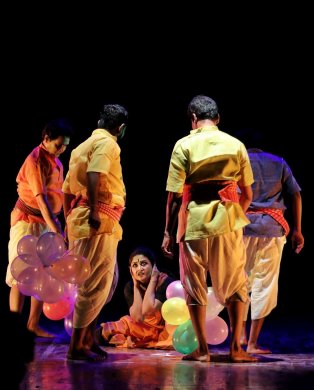 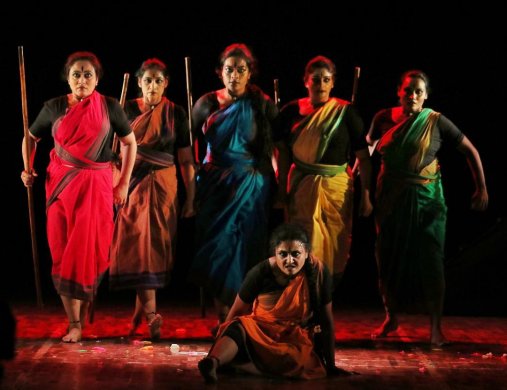 And still I rise In keeping with the trend set by the founder members of the Guild, "And still I rise" conceptualised, choreographed and directed by Jonaki Sarkar to the music composition of Sitangshu Majumder, was staged. The theme was as contemporary as was the dance style. The strong message of the piece was that we are marching forward towards civilizations, but commensurate with every step forward multiple steps backward are being taken when it comes to women. The message from a past bygone history, where a woman's wrath had destroyed a dynasty was evoked. "And still I rise" was a chilling reminder - not an appeal -that the so called civilisation that man is proud of may crumble down like a pack of cards. It was performed in the Navanritya style which has grown firm roots. The first two scenes focussed on child rape, marriage and dowry. The final scene was inspired by the poetic line of Rabindranath Tagore where he asks the Creator - why won't you give women their rights to win their own destiny. The final scene is a bold fight back against society. 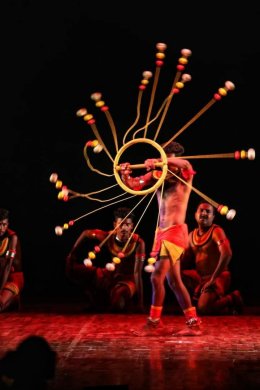 Rhythms of soil 'Rhythms of soil' directed by Tarun Pradhan - Founder-Director and Artistic choreographer of Sarabhuj, which is a socio cultural institution from Rangamati, Midnapur in West Bengal and which has been playing an intrinsic part in the revival, propagation and appreciation of traditional folk culture - presented "Matri Bhumir Chanda." Raibense Nach - samar kala or martial art of West Bengal- a traditional dance and a rich heritage of the country, revived by Gurusaday Dutta, the founder of Bratachari movement and the folk arts of Bengal was presented to the delight of art lovers. The dance was performed with sticks and swords to the accompaniment of drums and cymbals. 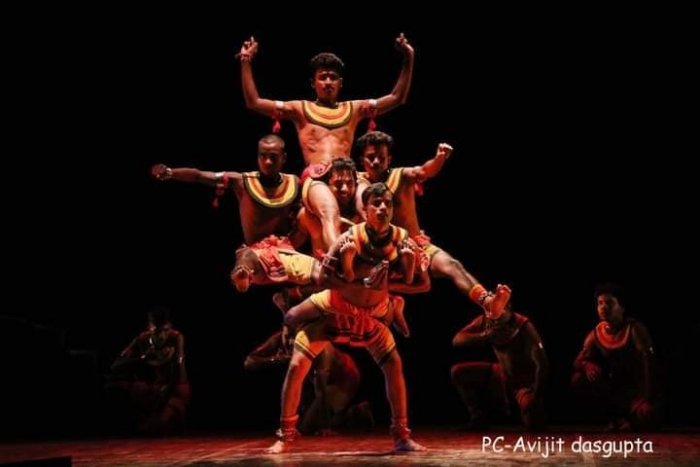 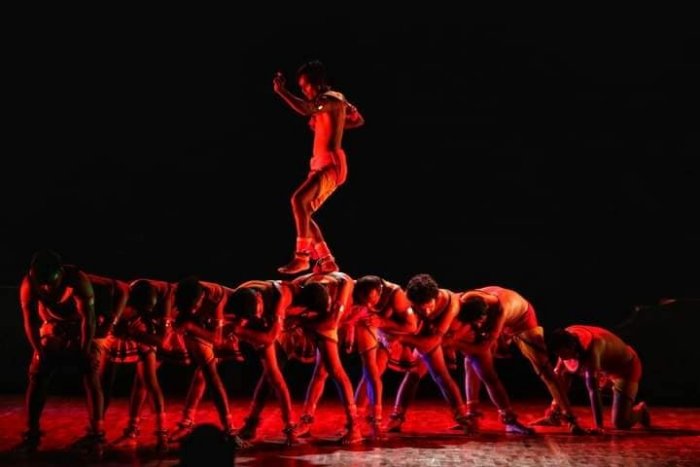 Rhythms of soil This folk form has a variety of movements like charak, natki etc. Paike Chhau, a folk form of Western Medinipur and Orissa border was also on the cards. These indigenous folk forms that are integral part of the lives of the village people were made proscenium stage worthy and presented to provide us - city people - with a brief glimpse of our heritage, while at the same time they maintained their cultural roots. The standing ovation received by the troupe was a mark of their excellence. Dancers' Guild gave a platform to Kohinoor Sen Barat, choreographer of 'Rasabharatam,' a group presentation based on the concept of portraying Navarasa using nine different stories from the Indian epic Mahabharata, in his own inimitable style. The stories were the stimulants, which brought about physical responses, elucidated through transitory and fleeting emotions. 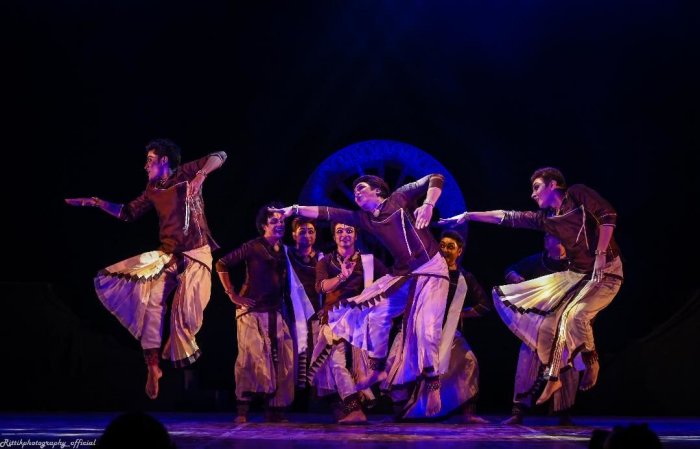 Hasya (Rasabharatam) 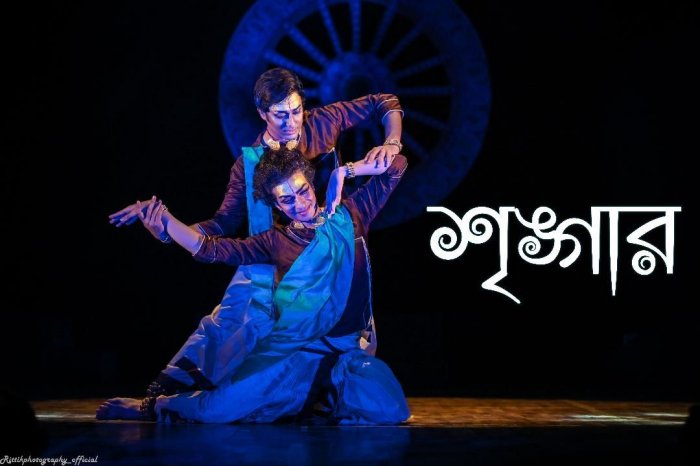 Sringar (Rasabharatam) Bharata Muni - author of the Natya Sastra - has said that the aim of presenting a play is to evoke Rasa. Rasa is generally regarded as the cornerstone of Indian aesthetics, and according to Bharata, it is the product of the combination of the Vibhavas, Anubhavas, and Vyabhichari bhavas. It talks of artistically influencing the perspective of the audience by the performers. This reviewer is restricted to reporting about Rasabharatam, because of not being present in the hall at the time of its performance. Dance choreography, design and overall direction of the piece were by Kohinoor Sen Barat, while it was conceptualised and scripted by Pokhraj Chakraborty assisted by Drabin Chatterjee. Light designer Dinesh Poddar assisted the performance. Sollukattus were provided by Subhajit Dutta, Biswapratim Bose and Kohinoor Sen Barat. Vocalists Jaydeep Sinha, Suchismita Chakraborty and Pokhraj Chakraborty along with flautist Manab Mukherjee, Sarodia Koushik Mukherjee on sarod, percussionist Arup Ratan Mukherjee provided musical support. 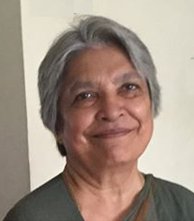 Tapati Chowdhurie trained under Guru Gopinath in Madras and was briefly with International Centre for Kathakali in New Delhi. Presently, she is a freelance writer on the performing arts. |